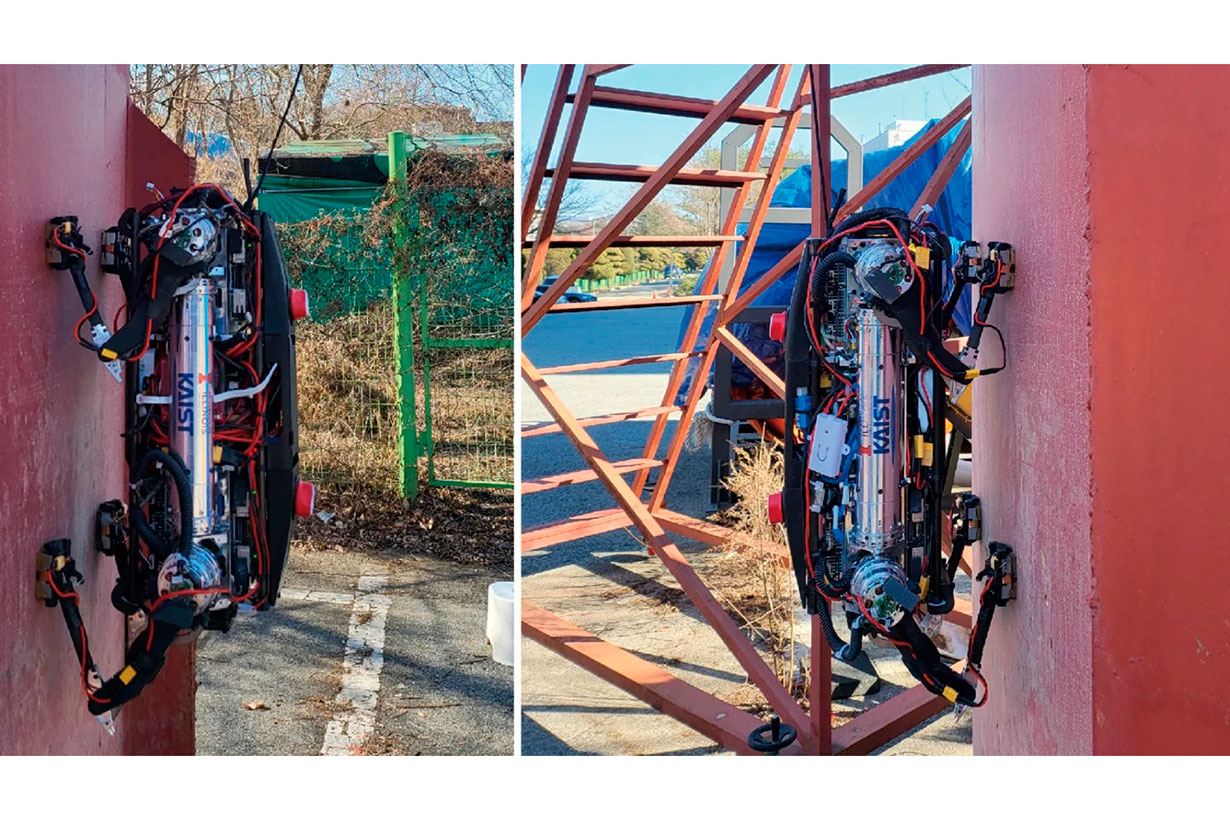CLOSE
About Elements
TANAKA is a leading company in the field of precious metals.
Advanced materials and solutions that support societal progress, the development stories behind them, the voices of engineers, and our management philosophy and vision—
Elements is an online media platform that shares insights that lead to a better society and a more prosperous future for the planet under the slogan “Mastering Precious Metals.”

The newest robot dog can scale walls and ceilings

MARVEL certainly lives up to the name. Top Image Credit:KAIST
It’s easy to have a love-hate relationship with the ever-widening industry of robot dogs. On the one hand, many of them are almost as cute and agile as the four-legged friends they emulate; on the other hand, some of them have guns on their heads.
That being said, it’s hard to decide how to take the latest feat for quadrupedal robots: they’re able to climb walls and ceilings now. The new achievement comes courtesy of researchers at the Korea Advanced Institute of Science and Technology, who published a paper last week in Science Robotics detailing their new creation, MARVEL. Short for “Magnetically Adhesive Robot for Versatile and Expeditious Locomotion,” MARVEL lives up to both the name and its acronym by relying on four electromagnetic legs tipped with new smart materials called magnetorheological elastomers (MREs). These MREs resemble the consistency and elasticity of rubber, but contain components such as carbonyl iron powder that make them capable of conducting electromagnetic force.
[Related: This agile robot dog uses a video camera in place of senses.]
As also pointed out over the weekend by Futurism, MARVEL already excels at climbing up flat metal walls and ceilings at respective speeds of 1.6 and 2 feet per second. The four-legged robot is also capable of handling curved metal surfaces, such as storage tanks coated in 0.3-millimeter-thick paint underneath both rust and dust. Researchers also noted in the study? that MARVEL can tackle a variety of obstacles, including 10-centimeter-wide gaps, 5-centimeter-high barriers, all while easily transitioning between floor, wall, and ceiling settings.
All that versatility could soon make them potentially ideal tools for inspection scenarios within industrial environments, as well as large ships, bridges, and tall buildings that could prove potentially dangerous for humans. At just 18 pounds and only 13 inches long, MARVEL is about the same size as a small dog and incredibly portable and easy to handle.
[Related: Ghost Robotics now makes a lethal robot dog.]
Animals are increasingly inspiring researchers in designing robots that can maneuver within settings that prove difficult or dangerous for humans. Recently, a team of engineers even designed a two-winged, birdlike robot capable of landing atop a perch using a single grasping claw mechanism. Like MARVEL, the bird-bot’s abilities could lend themselves to accessing remote or dangerous areas that are otherwise hard for their human creators. Both designs are far from ready to make their commercial debut, but it certainly seems an era of everyday interactions alongside animal-like robots is in our future.
This article was written by Andrew Paul from Popular Science and was legally licensed through the Industry Dive Content Marketplace. Please direct all licensing questions to legal@industrydive.com.
![]()







